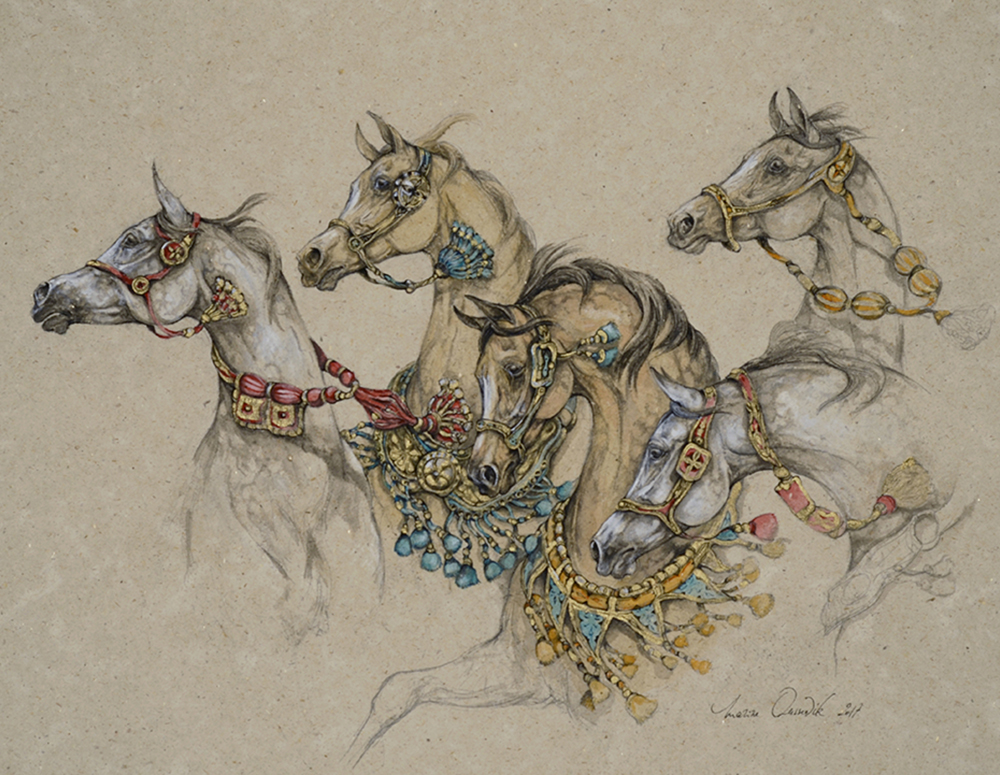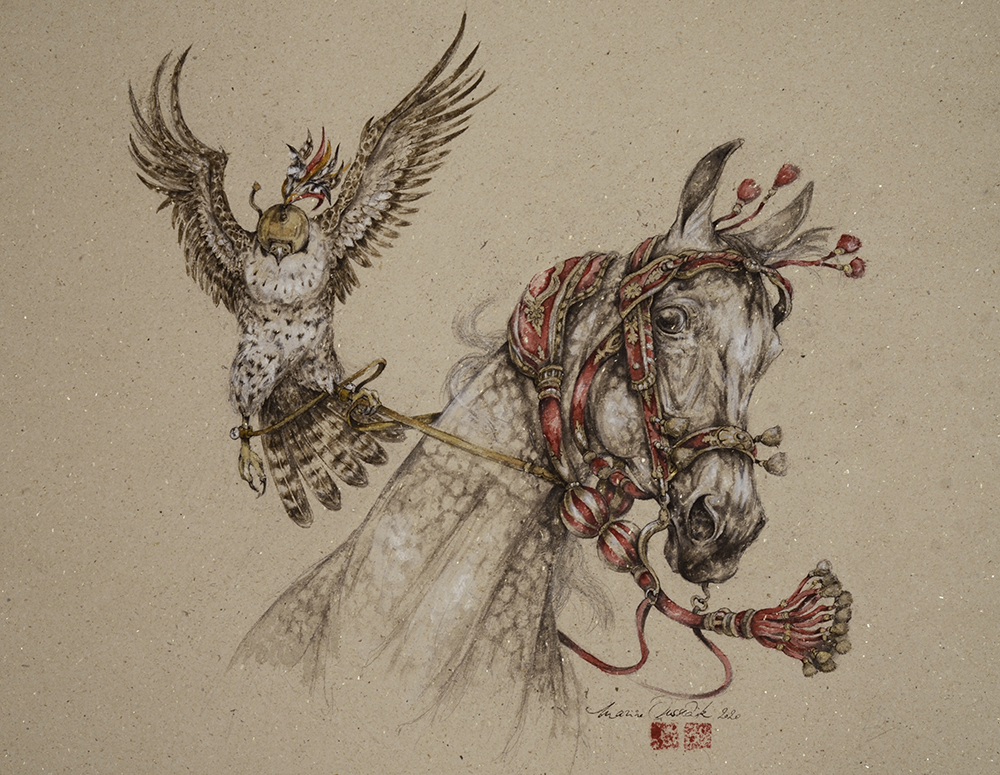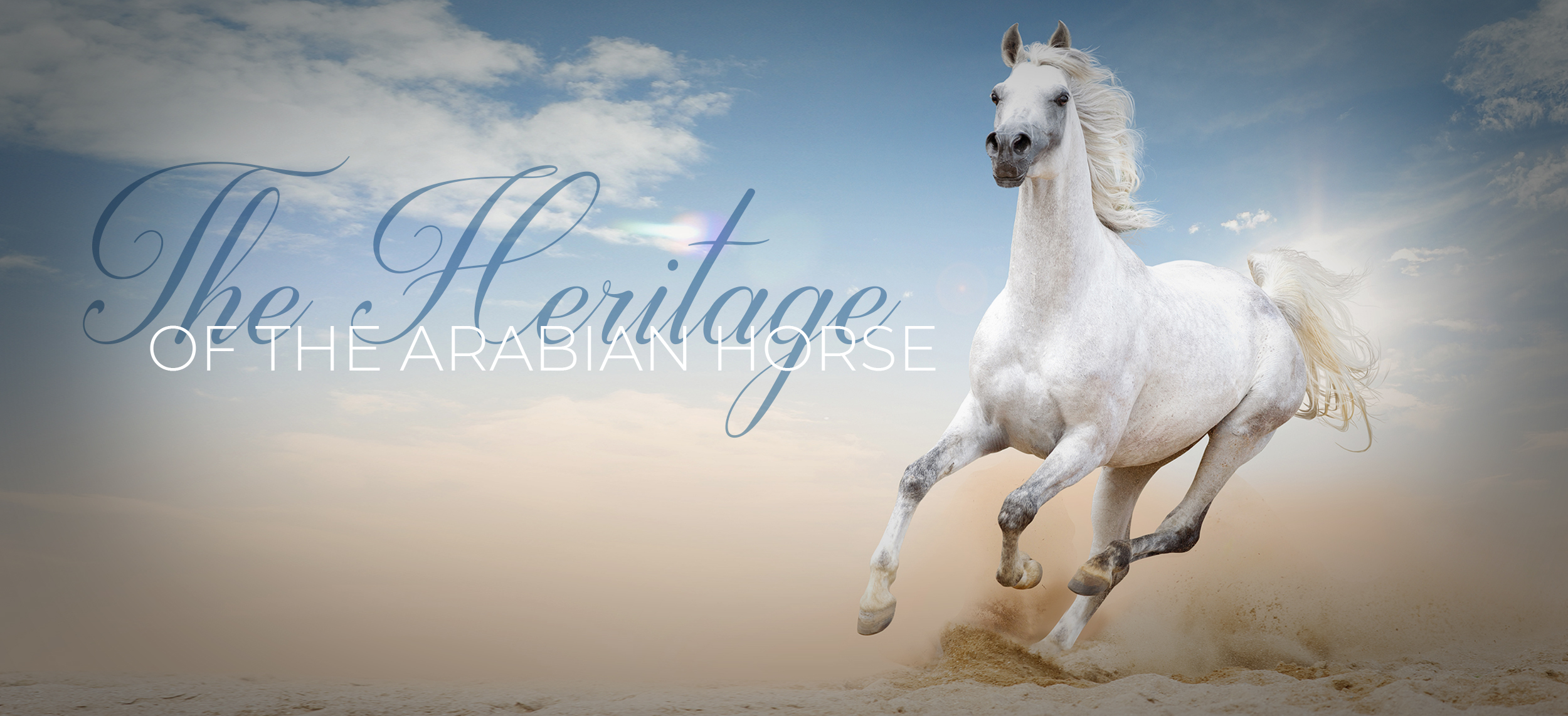
Prince of the Desert
First appearing more than six thousand years ago, the Arabian Horse is a mythical create whose legend has persisted through the ages: they are said to have been born from the desert wind. Originating in the borderlands of Asia and the Middle East, it is one of the oldest horse breeds in the world. A multifaceted jewel, its history is as legendary as the horse itself.
4,500 years ago, the great Bedouin tribes, isolated from the world in the deserts of Yemen and Mesopotamia, domesticated and raised this horse. Following in the footsteps of these Arab nomads, other skilled breeders have spread the breed around the world and maintain it to this day. It still inspires passion wherever it is found.
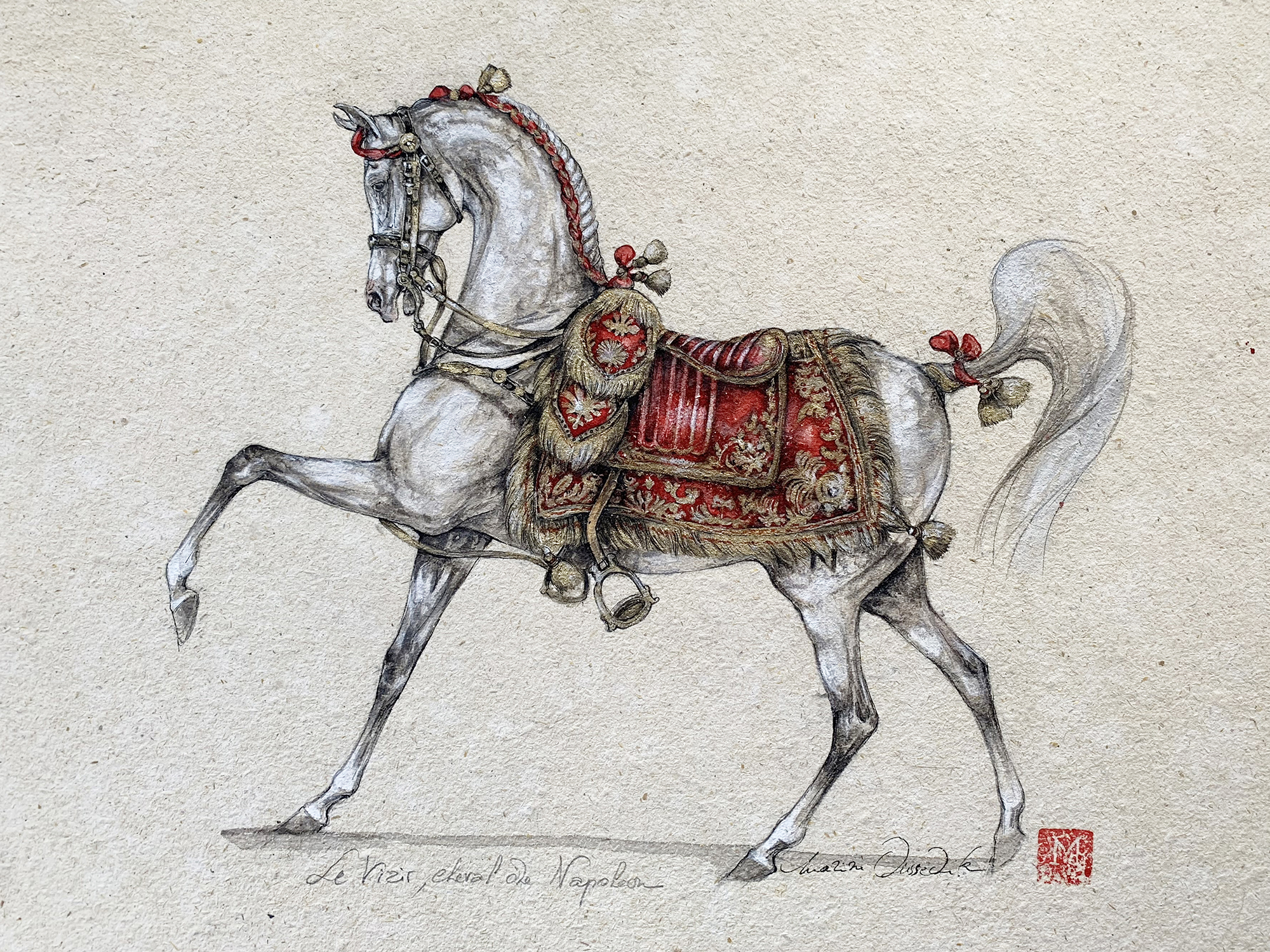
Victorious Warrior
Purebred Arabian horses appeared in England in the 17th century and a century later in America, Australia, Italy and Japan. In France, Napoleon Bonaparte was the first importer of Egyptian Arabian horses. Overwhelmed by their beauty and strength, he brought them into the imperial stud farms and thus improved the French cavalry, contributing to French breeders’ reputation for excellence. In the eyes of the Emperor, the Arabian horse was king. Among his most famous mounts was one Marengo, named after a battle won by the emperor in 1800.
This noble steed with its light grey coat led entire armies to victory and experienced some of history’s greatest moments alongside the Emperor. For fifteen years, Marengo and his master were inseparable. Napoleon rode him during the battles of Austerlitz, Jena and Wagram. According to legend, Marengo galloped for five hours to cover the 130 kilometres between Burgos and Valladolid. In 1812, alongside the nearly-annihilated imperial army, he survived the cold of the terrible retreat from Russia and returned safely to France.
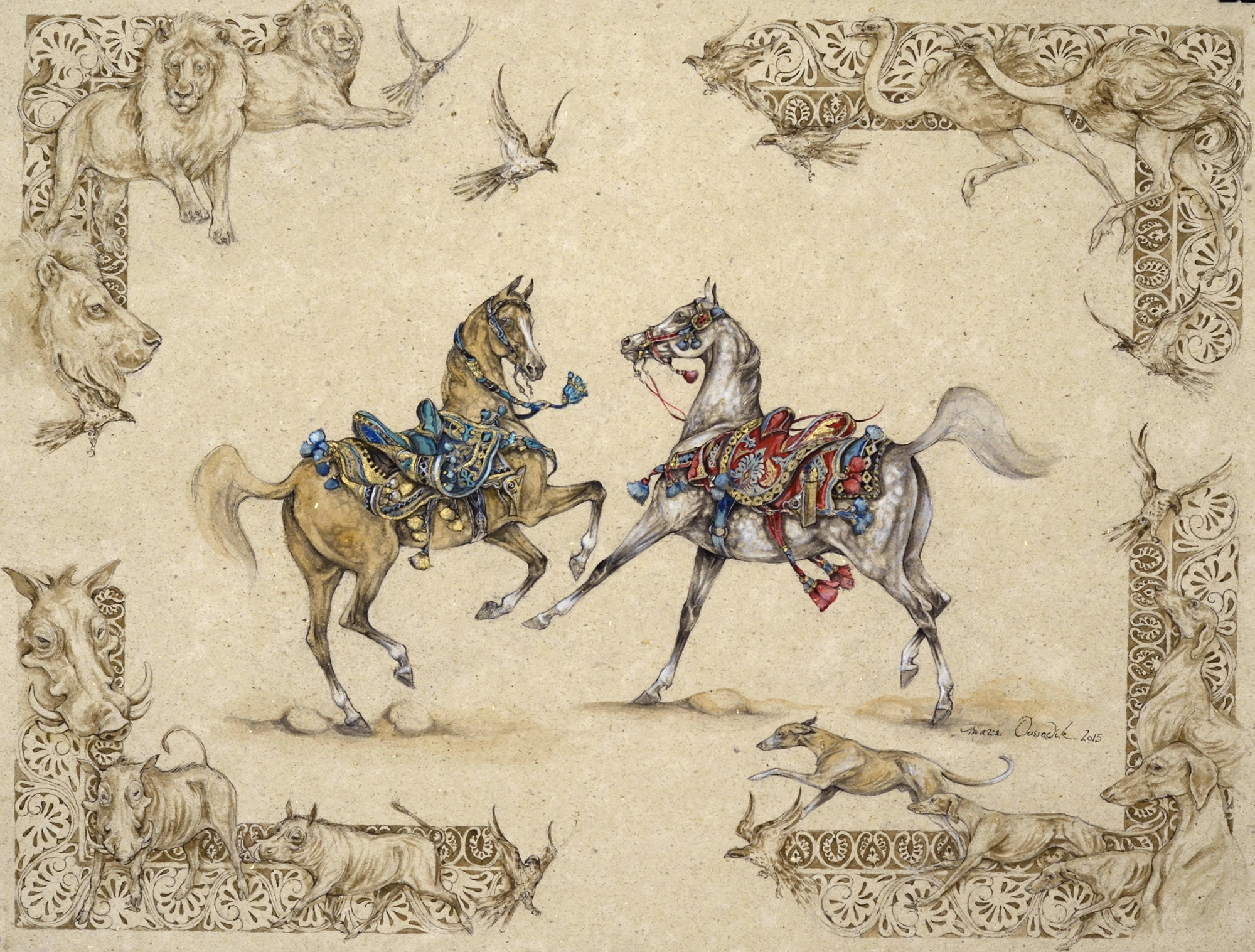
A French icon
The influence of the Arabian Horse in France has since continued to grow. Through cross-breeding, its attributes have benefited the entire equine sector. Stamina, aesthetics, power… its extraordinary qualities enhance and shine in many other breeds, such as the Welsh pony, the Percheron, the Comtois and the Boulonnais. The latter is a draught horse, native to the La Manche region, which built its reputation under the Ancien Régime, when it travelled the Route du poisson: a path linking Boulogne-sur-Mer to Paris. These draught horses would haul carts over 300 kilometres in less than 24 hours to deliver the freshest fish possible to Paris markets.
More than a job: a passion
Witness to and actor of history, the Arabian Horse belongs to all the peoples of the world. Throughout the ages and thanks to humanity’s dedication, the Arabian horse has become a mystical legend, a victorious warrior, an epic steed and an elite progenitor.
Today, the breeding of purebred Arabians is an art carefully preserved by a whole sector of professionals: owners, breeders, trainers and artisans. All these people have come together in Paris for almost half a century to celebrate their shared passion at the World Arabian Horse Championship.
Illustrations :

